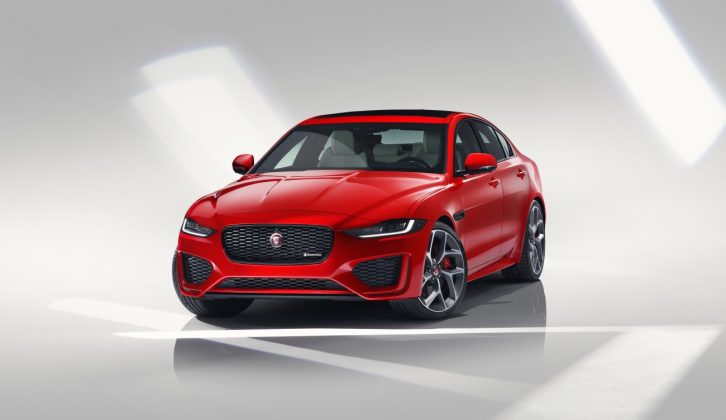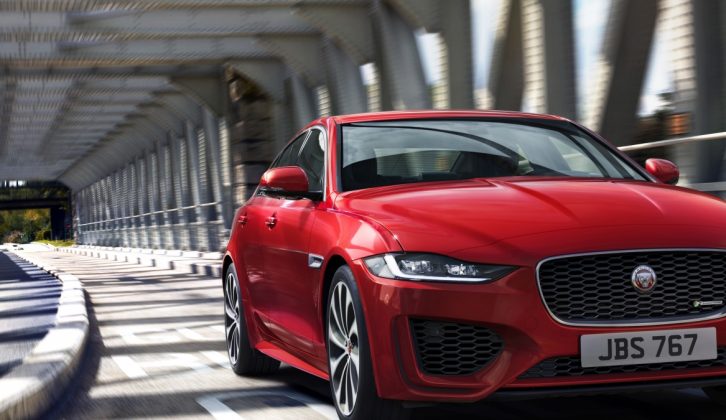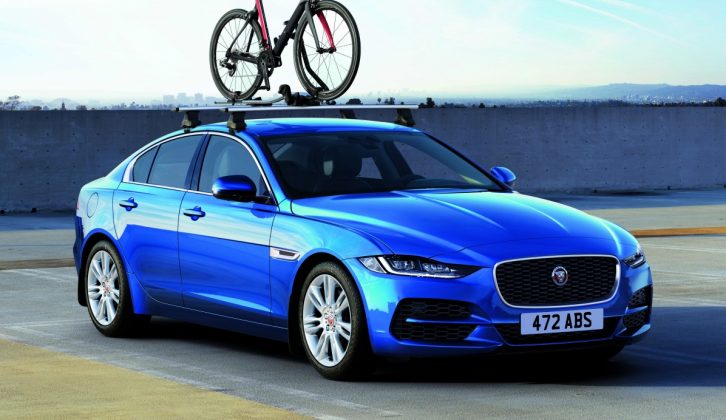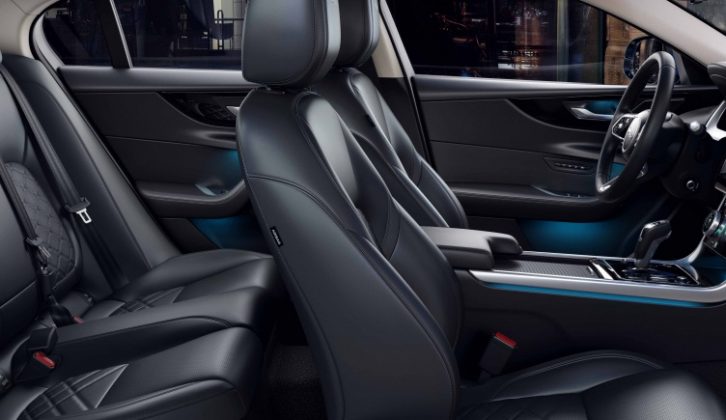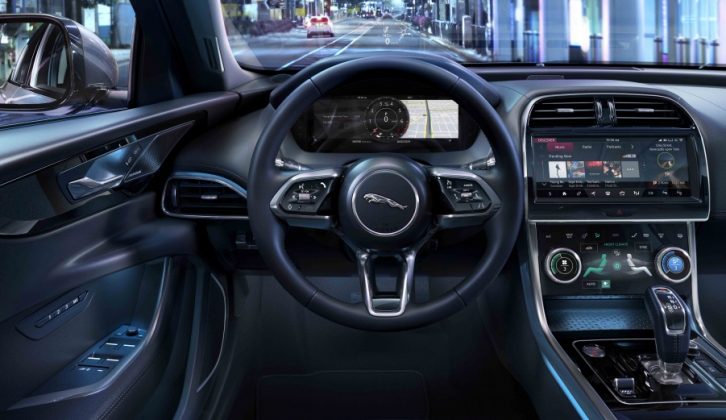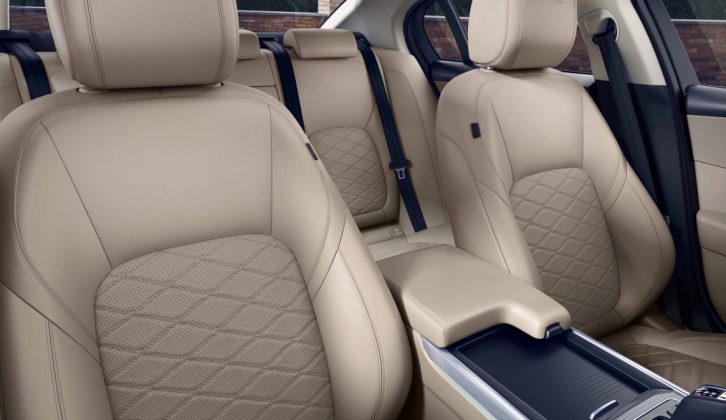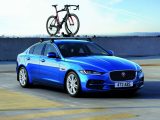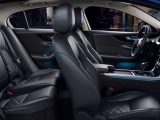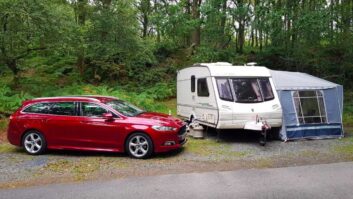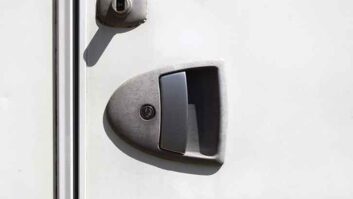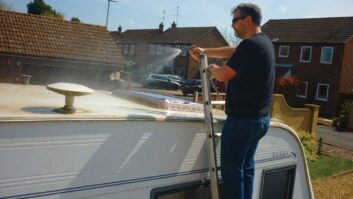The Jaguar XE has always been great to drive, but sales have been slow compared with rivals like the Audi A4, BMW 3 Series and Mercedes-Benz C-Class. Now Jaguar has made a host of mid-life improvements to tempt drivers away from its German competitors.
Most obviously, Jag has overhauled the XE’s looks. The design team concluded that the original XE wasn’t assertive enough, so the updated car has a more purposeful look. Front and rear bumpers are new, and the XE now comes with LED headlights and tail lights.
The old XE’s interior finish let the car down compared with the likes of the C-Class. The new cabin is a big improvement, with more soft-touch plastics and a high-tech, twin screen infotainment system fitted to high-spec models. Called Touch Pro Duo, it’s a feature shared with the all-electric Jaguar I-Pace.
Serious speed
The most powerful engine is a 300PS (296bhp) turbocharged petrol, badged P300. It’s part of the Ingenium family of four-cylinder engines, but sounds far sportier than most four-cylinder engines.
Although maximum pulling power (295lb ft) arrives at a lowly 1500rpm, the P300 is happy to be revved hard. The eight-speed auto changes gear smoothly, and in sport mode is happy to make the most of the engine’s considerable performance. Jaguar claims a 0-60mph time of 5.4 seconds.
Such serious speed comes with a thirst; the car returns 30.5-33.6mpg on the WLTP combined cycle. We’d be surprised to see much better than 20mpg while towing.
Its appetite for fuel aside, the XE P300 has the makings of a capable tow car. With a kerbweight of 1690kg, the 85% match figure is 1437kg. That’s well within the 1800kg legal towing limit. Four-wheel drive, standard with this engine, is another plus for caravanners.
Diesel’s the one for towing
However, if you’re being even vaguely sensible, one of the diesels should prove better suited to regular towing, certainly if you want to keep a grip on fuel costs.
The D180 AWD should fit the bill. You still get the benefit of sending power to all four wheels, but the official combined economy improves to 41.6-46.4mpg. What’s more, pulling power increases from 295lb ft to 317lb ft, more than enough to tow any sensibly matched caravan.
With a kerb weight of 1685kg, the diesel is just 5kg lighter than the petrol, which gives an 85% match figure of 1432kg. The 1800kg legal towing limit matches the figure for the petrol.
The diesel is also significantly cheaper than the range-topping petrol; prices for the AWD version start from £36,415, as opposed to £39,415 for the P300. There’s also a rear-wheel-drive version of the diesel, priced from £34,330, and a P250 RWD petrol, priced from £33,915.
Whichever engine is chosen, the XE should prove stable while towing. The composed handling and supple but controlled ride bode well.
Rewarding to drive
In solo driving, the XE is extremely rewarding to drive, especially if you choose the P300 petrol. The steering wheel has been redesigned as part of the interior makeover, and it looks great and feels good to hold. A small detail perhaps, but it sets the tone for a really sporty drive.
Most obviously, Jag has overhauled the XE's looks. The design team concluded that the original XE wasn't assertive enough, so the updated car has a more purposeful look
